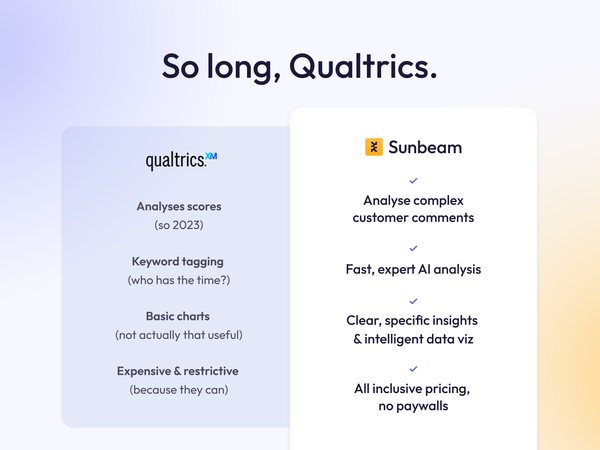Making Sense of Ofsted Reports (and Everything Else)

My daughter’s school is due for an school inspection, and it got me thinking - these reports are actually a goldmine of feedback. Fortunately, I'm the founder of Sunbeam, a company that specialises in extracting meaning from unstructured feedback.
I grabbed the last 10,000 Ofsted reports and ran them through Sunbeam. The results highlighted the key drivers of inspection outcomes - curriculum, teaching quality, leadership, and behaviour. These topics dominate the reports, as you’d expect.
But I wanted to go deeper, so I broke the reports down by lead inspector. Sunbeam users do this all the time, segmenting feedback by store, customer type, or any other relevant attribute to see what matters most to each group. In this case, it turns out some inspectors consistently focus on curriculum detail, while others pay more attention to teaching quality. You can easily build a profile of each inspector’s style and focus areas.
Turning to what actually drives inspection grades, Ofsted used to rate schools using categories like Outstanding, Good, etc. Although this system is now deprecated, most reports still carry those labels. Using Sunbeam, it was straightforward to build impact models that explain how much each theme, like curriculum or teaching, drives those outcomes.
Unsurprisingly, Safeguarding ends up as by far the most influential factor, explaining 28%. What's more interesting is that the curriculum design seems to matter more to Ofsted inspectors than the actual execution of teaching, at least in terms of its predictive power.

For all the media attention and talk about pupil behaviour, it plays a very small role in determining the quality of a school's inspection.
Whether you’re dealing with inspection reports, customer surveys, or employee feedback, Sunbeam can help you make sense of any messy pile of text, revealing what truly matters.



